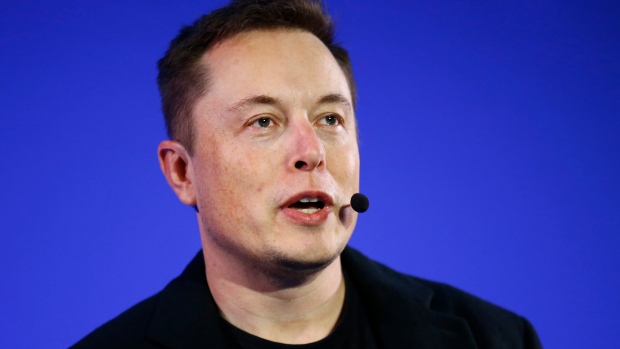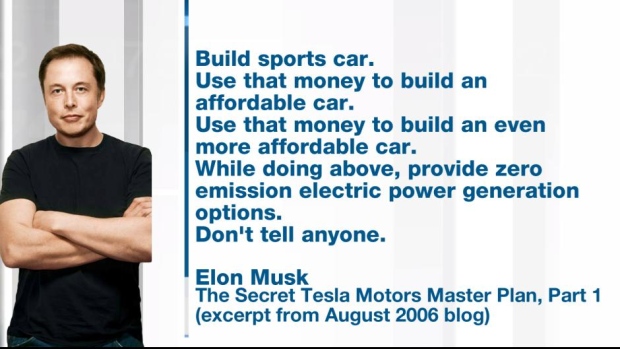Jul 11, 2016
Tesla CEO Elon Musk promises new 'master plan' amid controversies

Nearly a decade into carrying out the first phase of his “master plan” for an electric car revolution, Elon Musk is on the cusp of phase two.
Known for occasionally stirring speculation on Twitter about his plans, the founder and CEO of Tesla Motors seemed more serious midday Sunday when he told his 4.39 million Twitter followers he was “working on Top Secret Tesla Master Plan, Part 2,” adding he was “hoping to publish later this week.” The tease was a wink to an August 2006 blog post where Musk laid out his vision for the California-based electric car maker’s growth.

It also comes as Tesla faces mounting controversy. Regulators in the United States are probing the company’s autopilot feature after a driver was killed earlier this year while the semi-self-driving technology was engaged. Meanwhile, Tesla is struggling to meet demand for its vehicles, falling well short of the 17,000-vehicle goal for second quarter shipments and struggling to “rethink” its production planning in order to deliver some 400,000 pre-ordered Model 3 sedans; representing more than five years of the company’s current total production.
Musk is personally facing criticism for proposing Tesla spend US$2.8 billion to buy SolarCity; a solar panel provider and installer where he also serves as chairman and principal shareholder. Despite the opposition from some investors, others believe buying SolarCity might be a core aspect of the next so-called “master plan.”
“The idea here is we would all have solar panels on our homes and we would generate enough electricity not just for our homes, but we would generate enough for other homes,” Peter Misek, a partner with the BDC IT Venture Fund and a longtime technology analyst, told BNN on Monday morning. “The car would actually be a way of storing that energy during off-peak or non-sunshine hours and so you would balance the grid and the load by using, basically, movable batteries.”
“So your car becomes part of the grid, that storage system,” Misek said, referencing a type of vehicle-to-grid technology (V2G), which was previously described in more detail by a Canadian expert in the field to BNN in April.
Musk himself has acknowledged that is essentially the strategy behind his SolarCity proposal, tweeting later on Sunday the deal was about “creating a seamlessly integrated Tesla battery & solar power product that looks beautiful.” Perhaps the most telling insight came even later Sunday, when Musk tweeted his plan was “something like” the one proposed by Generate Capital co-founder Jigar Shah last month, which very clearly explained the strategy of sourcing power for both homes and cars from renewables such as solar.
“If you look at [Musk’s] first master plan, it was so cheekily coy and yet very, very thoughtful at the same time [so] I would imagine he would say something like – get house off grid, allow cars to all be green and then some other mode of transportation, some other part of our household that he is going to try and bring into the 21st or 22nd century,” said Misek. “That may be what he is going to talk about, this idea that we aren’t going to need fossil fuels going forward.”





